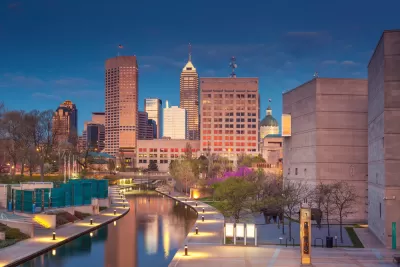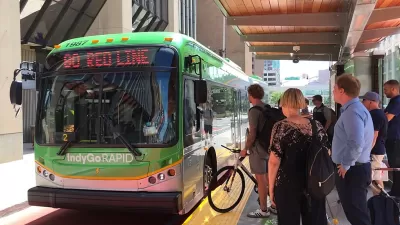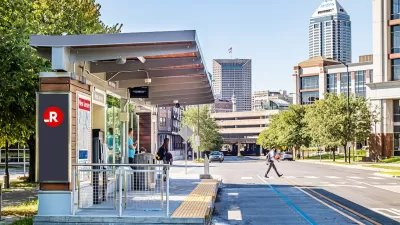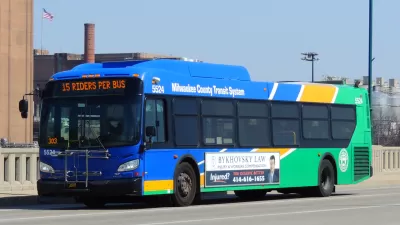In addition to connecting residents to jobs and medical facilities, city leaders hope the BRT line will boost economic development along the route.

Indianapolis city officials hope a new bus rapid transit line will bring economic development to a historically underserved neighborhood, reports Deon J. Hampton. "The Indianapolis Public Transit Corporation’s $188 million Purple Line, a 15-mile bus rapid transit, or BRT, system will eventually run from downtown to the neighboring city of Lawrence, providing access to jobs and healthcare for those who mainly depend on mass transit."
According to the article, the city wants to see new retail space and affordable housing developed along an eight-mile corridor along the new bus route. "In Indianapolis, many low-income residents on East 38th Street, especially those between College Avenue and Post Road in the northeast section of town, support the upcoming project, which would bring new infrastructure improvements such as new drainage and curbs."
However, some critics of the project express concern that the bus line will reduce access to some businesses and put transit farther from some residents by removing some existing bus stops. But proponents of BRT say the line will help low-income residents reach jobs and amenities. According to Scarlett Andrews, director of the city’s Department of Metropolitan Development in Indianapolis, "the city has modified its zoning code specifically for transit oriented development along the bus route in preparation of economic growth and connectivity along East 38th Street, a section of which has underutilized strip malls, declining housing developments and has turned into a center for public safety issues."
FULL STORY: Indianapolis looks to mass transit project to spur development in low-income area

Study: Maui’s Plan to Convert Vacation Rentals to Long-Term Housing Could Cause Nearly $1 Billion Economic Loss
The plan would reduce visitor accommodation by 25,% resulting in 1,900 jobs lost.

North Texas Transit Leaders Tout Benefits of TOD for Growing Region
At a summit focused on transit-oriented development, policymakers discussed how North Texas’ expanded light rail system can serve as a tool for economic growth.

Why Should We Subsidize Public Transportation?
Many public transit agencies face financial stress due to rising costs, declining fare revenue, and declining subsidies. Transit advocates must provide a strong business case for increasing public transit funding.

How to Make US Trains Faster
Changes to boarding platforms and a switch to electric trains could improve U.S. passenger rail service without the added cost of high-speed rail.

Columbia’s Revitalized ‘Loop’ Is a Hub for Local Entrepreneurs
A focus on small businesses is helping a commercial corridor in Columbia, Missouri thrive.

Invasive Insect Threatens Minnesota’s Ash Forests
The Emerald Ash Borer is a rapidly spreading invasive pest threatening Minnesota’s ash trees, and homeowners are encouraged to plant diverse replacement species, avoid moving ash firewood, and monitor for signs of infestation.
Urban Design for Planners 1: Software Tools
This six-course series explores essential urban design concepts using open source software and equips planners with the tools they need to participate fully in the urban design process.
Planning for Universal Design
Learn the tools for implementing Universal Design in planning regulations.
Ascent Environmental
Borough of Carlisle
Institute for Housing and Urban Development Studies (IHS)
City of Grandview
Harvard GSD Executive Education
Toledo-Lucas County Plan Commissions
Salt Lake City
NYU Wagner Graduate School of Public Service





























